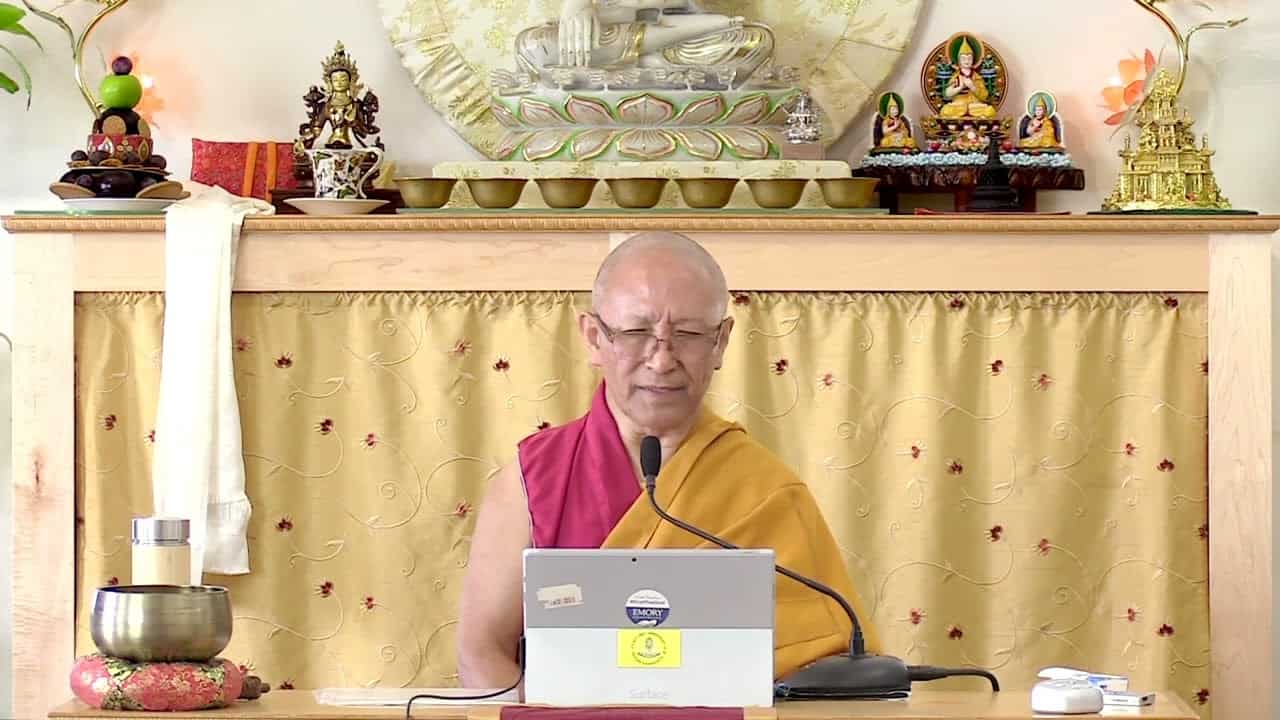Transforming and naturally abiding Buddha nature
118 Samsara, Nirvana, and Buddha Nature
Part of an ongoing series of teachings (retreat and Friday) based on the book Samsara, Nirvana, and Buddha Nature, the third volume in The Library of Wisdom and Compassion series by His Holiness the Dalai Lama and Venerable Thubten Chodron.
- Reviewing factors that impede or stimulate the buddha disposition
- Four types of beings whose buddha nature is defiled
- Explanation of naturally abiding buddha nature according to Madhyamaka
- Emptiness of the defiled mind and emptiness of the purified mind
- Ultimate nature and lack of inherent existence
- Mind in samsara and mind in nirvana
- Examining how erroneous grasping gives rise to afflictions and actions
- Relationship between naturally abiding buddha nature and transforming buddha nature
- Description of transforming buddha nature
- Neutral or virtuous states of mind
- Seven types of awareness and buddha nature
- Relationship between buddha nature and buddha bodies
Samsara, Nirvana, and Buddha Nature 118: Transforming and Naturally Abiding Buddha Nature (download)
Contemplation points
- Take a moment to get in touch with the motivation inside you that aspires to have equal-hearted love and compassion for all beings. Where do you find that this motivation gets lost in your words and deeds throughout the day? What can you do to reconnect with it, to come back to it, throughout the day? Consider using the feedback you receive from others as an opportunity to reflect and renew your bodhicitta motivation.
- Review the activities that impede our buddha disposition and those that stimulate it. With these in mind, what can you do to enhance your spiritual practice? Make specific examples of activities that you can implement in your life.
- What is meant when it is said that the essence of the Tathagata and the essence of the transmigrator are the same? From what viewpoint is this describing the buddhas and sentient beings? From what viewpoint are they different and why?
- What is the connection between the mind being empty of inherent existence and the ability to eliminate the defilements from the mind? What does this mean for our spiritual growth and our potential for liberation and full awakening?
- Consider from the text, “This erroneous grasping [grasping at true existence] gives rise to attachment, anger, and all other afflictions”. Why? How? Examine your own mind to see when you are grasping at inherent existence. Why does that kind of grasping make other afflictions arise in your mind?
- Describe the transforming buddha nature in your own words. What consciousnesses and mental factors are included in transforming buddha nature? What types of awarenesses are not included in transforming buddha nature and why?
Venerable Thubten Chodron
Venerable Chodron emphasizes the practical application of Buddha’s teachings in our daily lives and is especially skilled at explaining them in ways easily understood and practiced by Westerners. She is well known for her warm, humorous, and lucid teachings. She was ordained as a Buddhist nun in 1977 by Kyabje Ling Rinpoche in Dharamsala, India, and in 1986 she received bhikshuni (full) ordination in Taiwan. Read her full bio.


